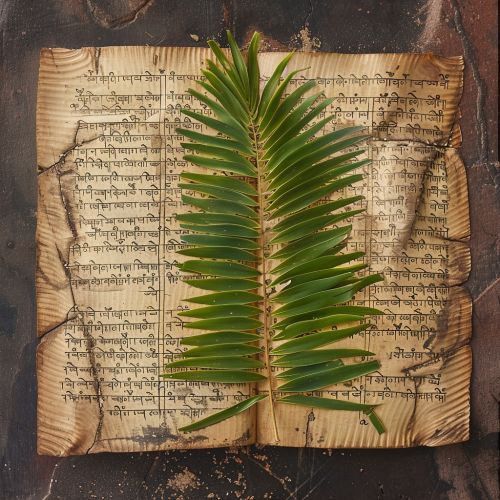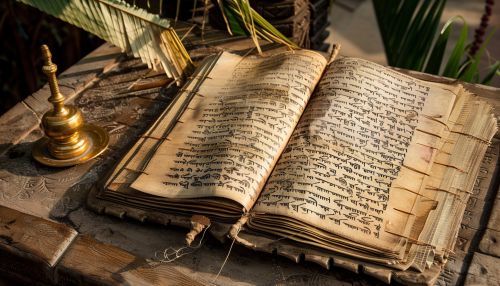History of Indian Literature
Ancient Indian Literature
Indian literature has a rich and diverse history that dates back thousands of years. The earliest known works of Indian literature are the Vedas, a collection of hymns and religious texts composed in Sanskrit. The Vedas are divided into four main collections: the Rigveda, the Samaveda, the Yajurveda, and the Atharvaveda. These texts are considered some of the oldest sacred scriptures in the world and have had a profound influence on Indian culture and religion.
The Upanishads, a series of philosophical texts, followed the Vedas and explored the nature of reality, the self, and the universe. These texts laid the foundation for many of the philosophical and spiritual traditions in India.


Classical Sanskrit Literature
Classical Sanskrit literature flourished during the first millennium CE, with notable works in poetry, drama, and prose. One of the most famous poets of this period was Kalidasa, whose works include the epic poems Raghuvamsha and Kumarasambhava, as well as the play Shakuntala. Kalidasa's works are celebrated for their lyrical beauty and profound emotional depth.
Another significant figure in classical Sanskrit literature is Bhasa, a playwright whose works were rediscovered in the 20th century. Bhasa's plays, such as Svapnavasavadattam and Pratijnayaugandharayana, are known for their complex characters and intricate plots.
The Panchatantra, a collection of animal fables, is another important work from this period. Written by Vishnu Sharma, the Panchatantra has been translated into numerous languages and has influenced storytelling traditions around the world.
Tamil Literature
Tamil literature has a long and illustrious history, with its roots in the ancient Sangam literature of the early centuries CE. The Sangam literature consists of poems and songs composed by various poets and covers a wide range of themes, including love, war, and social values.
One of the most renowned works of Tamil literature is the Tirukkural, a collection of couplets written by the poet Tiruvalluvar. The Tirukkural addresses ethical, social, and political issues and is considered a cornerstone of Tamil literature.
The Silappatikaram and the Manimekalai are two other significant works from this period. These epic poems narrate the stories of their protagonists and provide valuable insights into the culture and society of ancient Tamil Nadu.
Medieval Indian Literature
During the medieval period, Indian literature saw the emergence of several regional languages and literary traditions. Kannada, Telugu, Marathi, and Bengali literature began to flourish, each with its unique characteristics and notable authors.
In Kannada literature, the poet Pampa is celebrated for his epic poems Adipurana and Vikramarjuna Vijaya. Telugu literature saw the rise of the poet Nannaya, who is known for his translation of the Mahabharata into Telugu.
Marathi literature was enriched by the works of the saint-poet Dnyaneshwar, whose commentary on the Bhagavad Gita, known as the Dnyaneshwari, is a seminal work. Bengali literature saw the emergence of the poet Chandidas, whose devotional songs and poems are still revered today.
Bhakti and Sufi Literature
The Bhakti movement, which began in the early medieval period, had a profound impact on Indian literature. This movement emphasized devotion to a personal god and produced a wealth of devotional poetry and songs in various regional languages.
In North India, the poet-saints Kabir and Tulsidas are among the most prominent figures of the Bhakti movement. Kabir's poems, known as Kabir Doha, are known for their simplicity and spiritual depth, while Tulsidas's Ramcharitmanas is a retelling of the Ramayana in the Awadhi language.
In South India, the Alvars and Nayanars composed devotional hymns in praise of Vishnu and Shiva, respectively. These hymns are compiled in the Divya Prabandham and the Tevaram.
The Sufi movement also contributed to Indian literature, with poets like Amir Khusrow and Bulleh Shah composing mystical poetry in Persian and Punjabi. Their works explore themes of divine love and the human soul's quest for union with the divine.
Modern Indian Literature
The advent of British colonial rule in India brought significant changes to Indian literature. The introduction of Western literary forms and the English language led to the emergence of modern Indian literature.
One of the most influential figures in modern Indian literature is Rabindranath Tagore, who wrote in Bengali and English. Tagore's works, including the novel Gitanjali and the play The Post Office, earned him the Nobel Prize in Literature in 1913.
In Hindi literature, the novelist Premchand is celebrated for his realistic portrayal of rural life and social issues. His novels, such as Godaan and Nirmala, are considered classics of Hindi literature.
In Tamil literature, the writer Subramania Bharati is known for his patriotic and reformist poetry. Bharati's works inspired the Indian independence movement and continue to be celebrated for their literary and cultural significance.
Contemporary Indian Literature
Contemporary Indian literature is characterized by its diversity and experimentation with new forms and themes. Indian writers in English, such as Salman Rushdie, Arundhati Roy, and Vikram Seth, have gained international acclaim for their novels and have contributed to the global recognition of Indian literature.
Regional literature continues to thrive, with writers like U. R. Ananthamurthy in Kannada, Mahasweta Devi in Bengali, and Perumal Murugan in Tamil making significant contributions to contemporary Indian literature.
The Dalit literature movement has also emerged as a powerful voice in contemporary Indian literature. Writers like Bama and Omprakash Valmiki have brought attention to the experiences and struggles of the Dalit community through their autobiographies, novels, and poetry.
